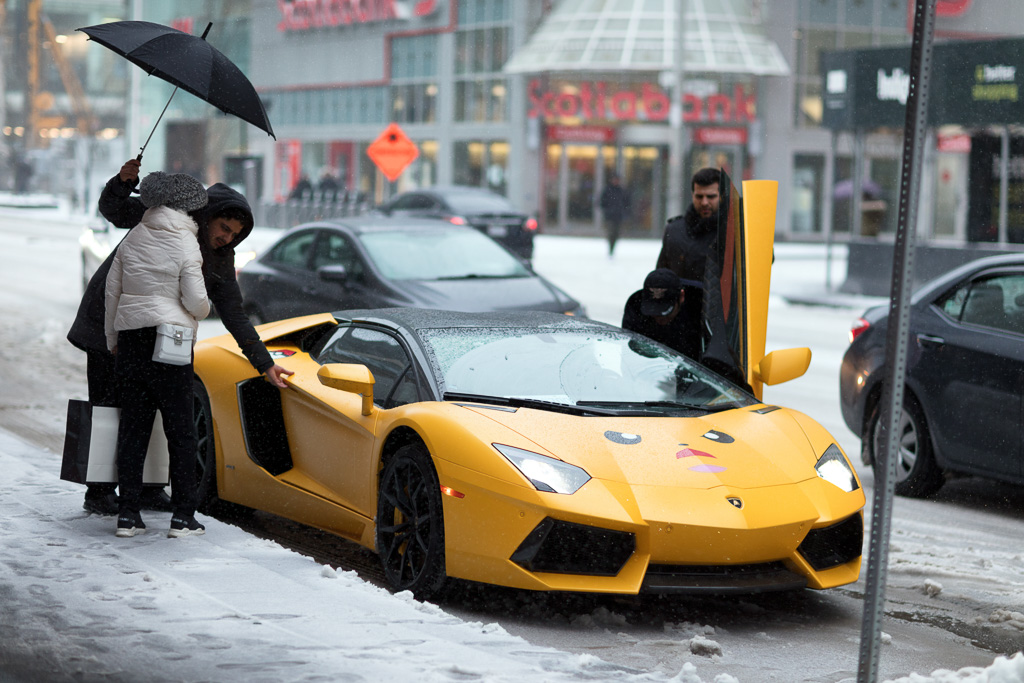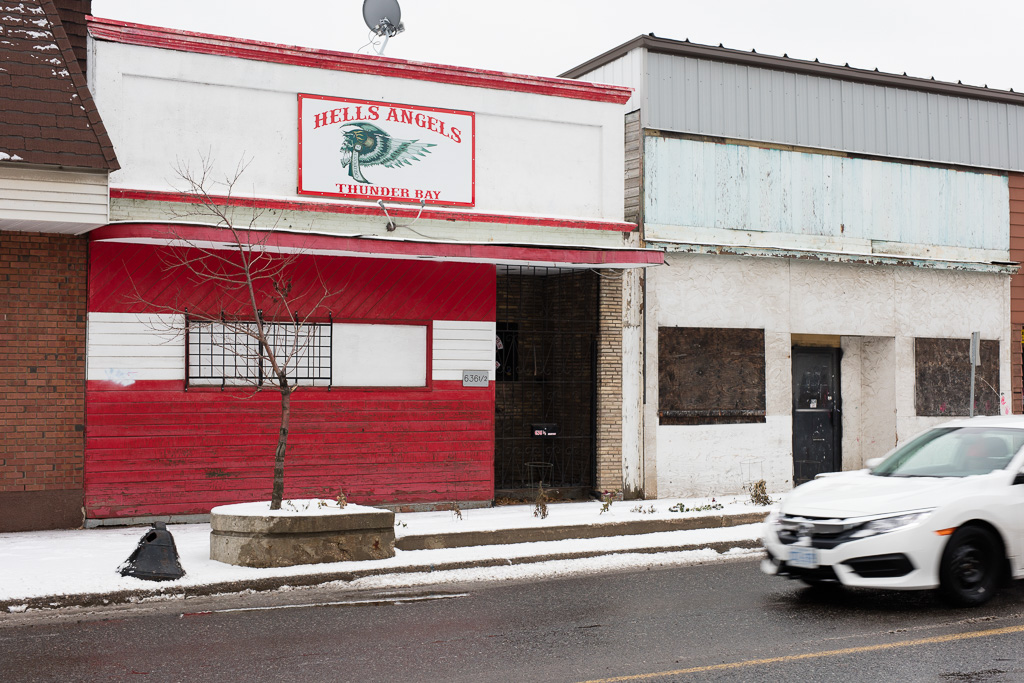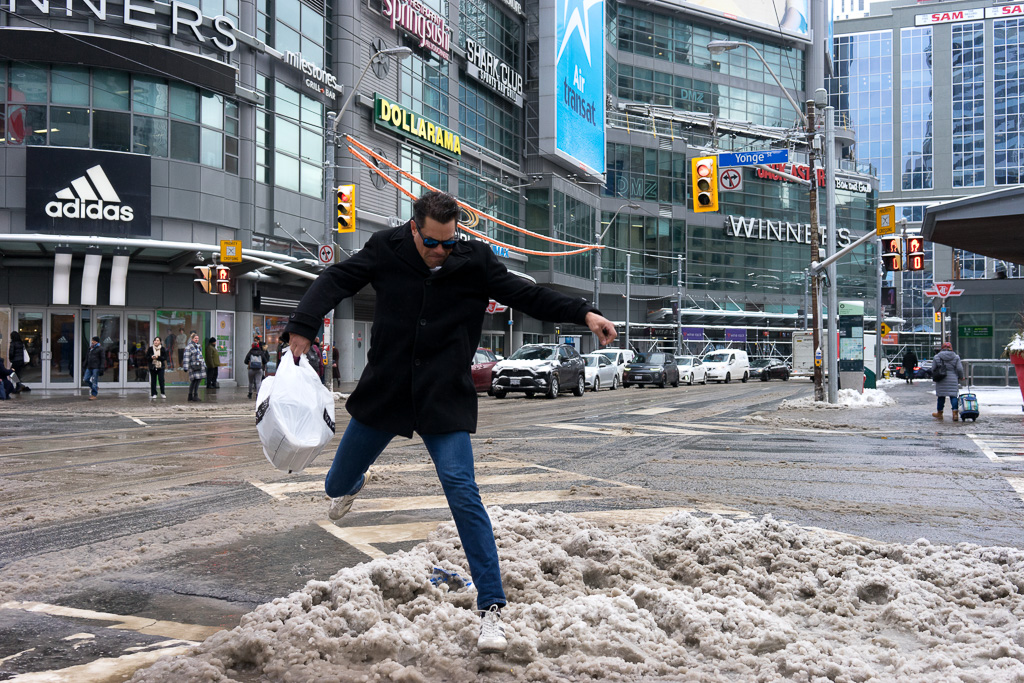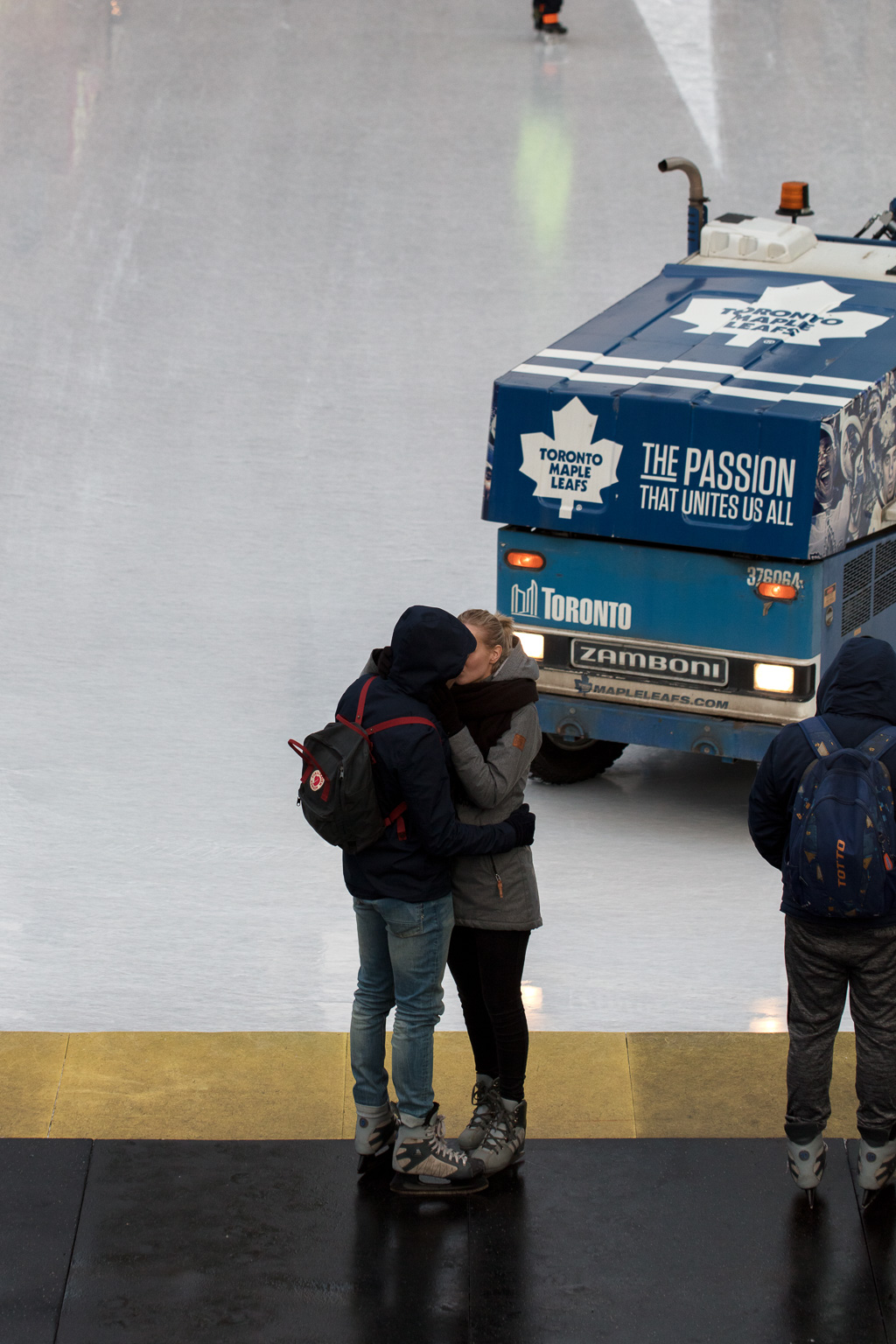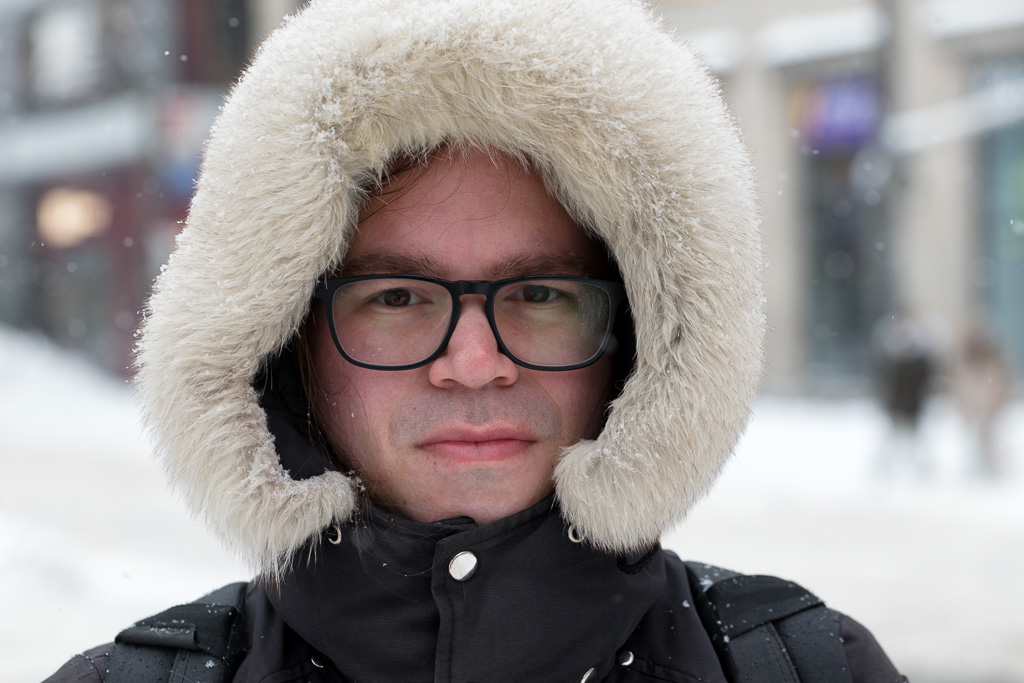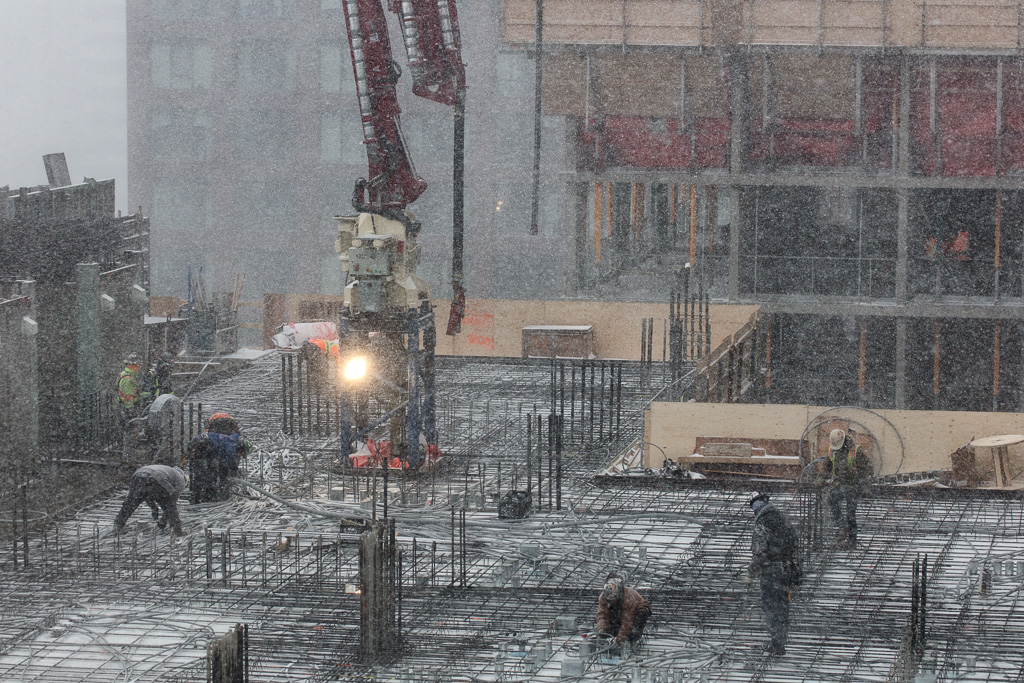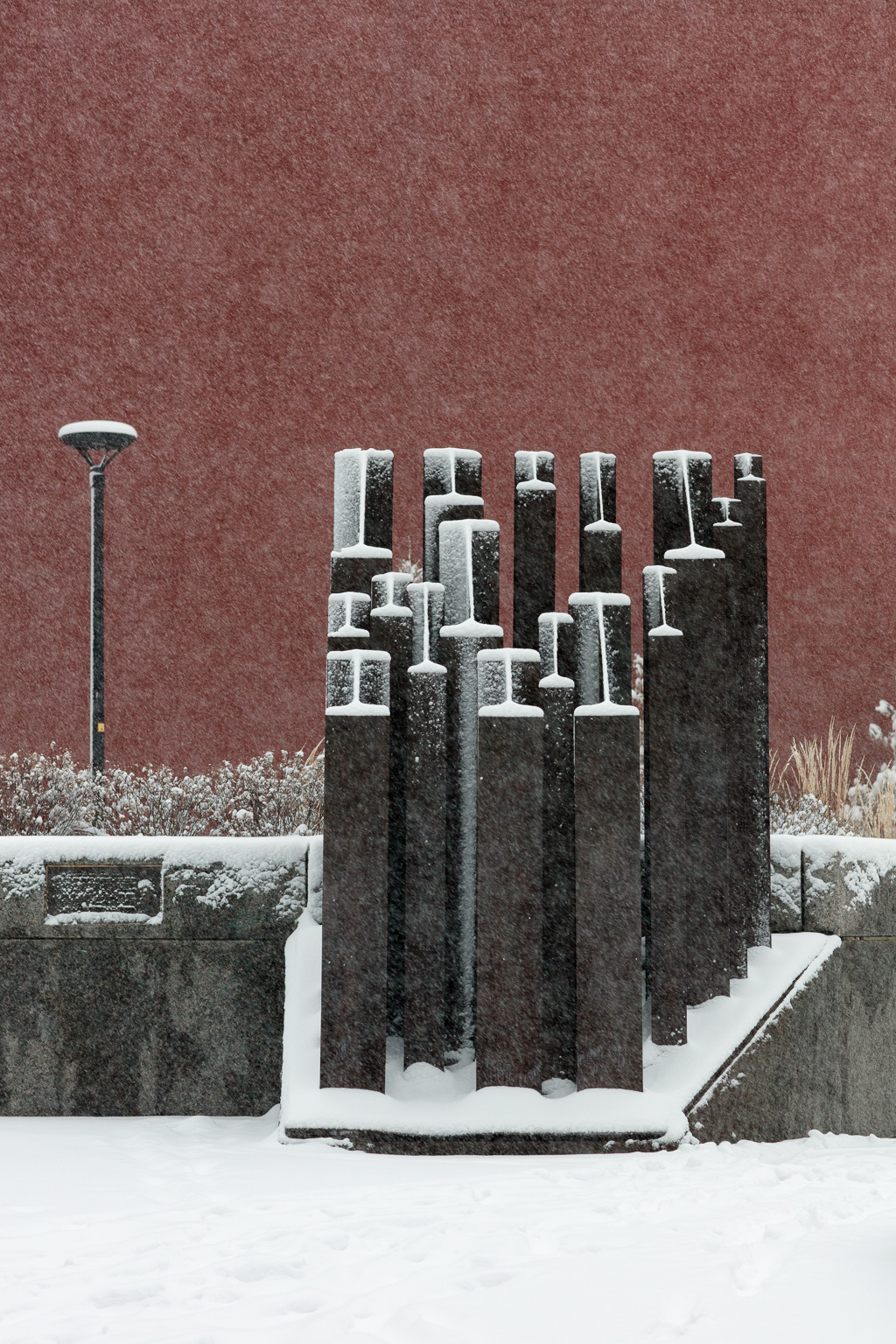This is a followup to my previous post which featured a photograph of a tent on the Mink Mile, with its juxtaposition of conspicuous wealth and extreme poverty. I was walking along the same stretch of road during an ice storm when I saw twenty-something shoppers exit Holt Renfrew while a valet pulled to the curb in their bright yellow Pikachu Lamborghini. In light of the fact that a two minute walk to the south will take you to multiple shelters and community hubs while a five minute walk to the west will take you to a soup kitchen, I find moments like this obscene. And on this particular day, when an ice storm produced hazardous driving conditions, the moment descended from obscenity to idiocy.
It came as a surprise to me to discover that not everyone shares my worldview. At the time I made the photo, I posted it on Twitter, and unlike my usual practice, I poked the hornet’s nest (which, it turns out, is the only way you get any traffic on that or any platform). I wrote: “Trust brats take their Pikachu Lamborghini out for a spin in an ice storm.” A sample of the comments that came back:
“brats” just because of their choice of car in this weather? smh. #CheckYourselfBeforeYouWreckYourself
Wow, the comments on here. Some people obviously are VERY wealthy. It happens, and good for them. I LOVE Pikachu #Pokemon
Haters gonna hate
Some comments were more neutral, observing that a Lamborghini has all wheel drive and a low centre of gravity so handles well in adverse weather. Not really on point but, hey, this is social media.
There is something missing from the thread, perhaps because it’s difficult for people to identify what isn’t represented in a photograph but nevertheless present. In this case, what isn’t represented but nevertheless present, is the great horde of the exploited which necessarily hovers in the shadows just beyond the light that shines on conspicuous wealth. If you squint your eyes and look a little more closely, you will see it.
